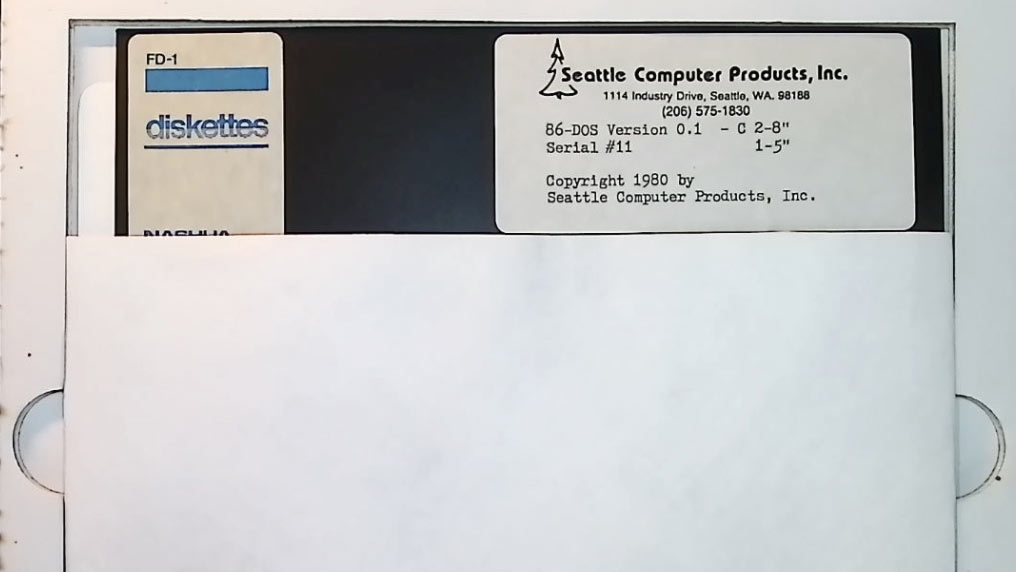An incredibly early release of 86-DOS has been found, imaged, and shared on the Internet Archive. The disk appears to be an original release of version 0.1 C of 86-DOS from Seattle Computer Products (1980) and includes several utilities, along with a game. Moreover, according to the disk label, what we see is just the eleventh disk off the duplication line. This is an important finding, as 86-DOS is a direct ancestor of PC DOS and MS-DOS.
Archive.org member f15sim shared the early86-DOS disk imageon the Internet Archive’s site just ahead of the New Year. We even get to see a photo of the disk in its paper sleeve, where “Serial #11” can be seen printed. Before this 86-DOS release was unearthed on its 5.25-inch floppy disk, the earliest version that had been saved for posterity was version 0.34.

If you are familiar with the IBM PC, you’ll probably know that MS-DOS was based on a product called 86DOS from Seattle ComputerHere is one of the earliest builds of what became Microsoft’s darling.It’s been compiled in July 1980, and less than 10 people had seen it.Until now. pic.twitter.com/d7bWM7Z296January 2, 2024
PC operating system enthusiasts like NTDEV have already investigated and tested the ancient 86-DOS version 0.11. If you click to expand the Tweet, you’ll see an exploration of the disk image contents and a short discussion of the OS, which was created to offer computer users and vendors a CP/M-like operating environment for 8086-based systems.

NTDEV highlights the Spartan nature of 86-DOS version 0.1 C. The OS is delivered as a floppy disk containing just nine files. The core OS standard COMMAND.COM was included, which interprets command line instructions like dir, copy, clear, and format. The disk also contained utilities for file and disk copying, a basic text editor, plus two or three development utilities.
The development utilities were important to 86-DOS releases as users would be short on software unless they sourced or translated existing 8-bit Z80 CP/M programs for the 8086 architecture. Thus, there was an assembly language program called ASM.COM, a code compiler app called HEX2BIN.COM, and a Z80 to 8086 translator dubbed TRANS.COM.

Last but not least, it is interesting to see that an OS as primitive as this release included a game. CHESS.COM was accompanied by instructions in CHESS.DOC, which would probably be essential reading on a no-graphics rendition of this complex strategic game.
To test 86-DOS yourself, you may grab the disk image directly from Archive.org and then follow the instructionsprovided hereto get a working SIMH/AltairZ80 Simulator compatible with the disk image.
Get Tom’s Hardware’s best news and in-depth reviews, straight to your inbox.
you’re able to read much more about the history of 86-DOS, PC DOS, MS-DOS, and more on the Wikipedia page.
Mark Tyson is a news editor at Tom’s Hardware. He enjoys covering the full breadth of PC tech; from business and semiconductor design to products approaching the edge of reason.